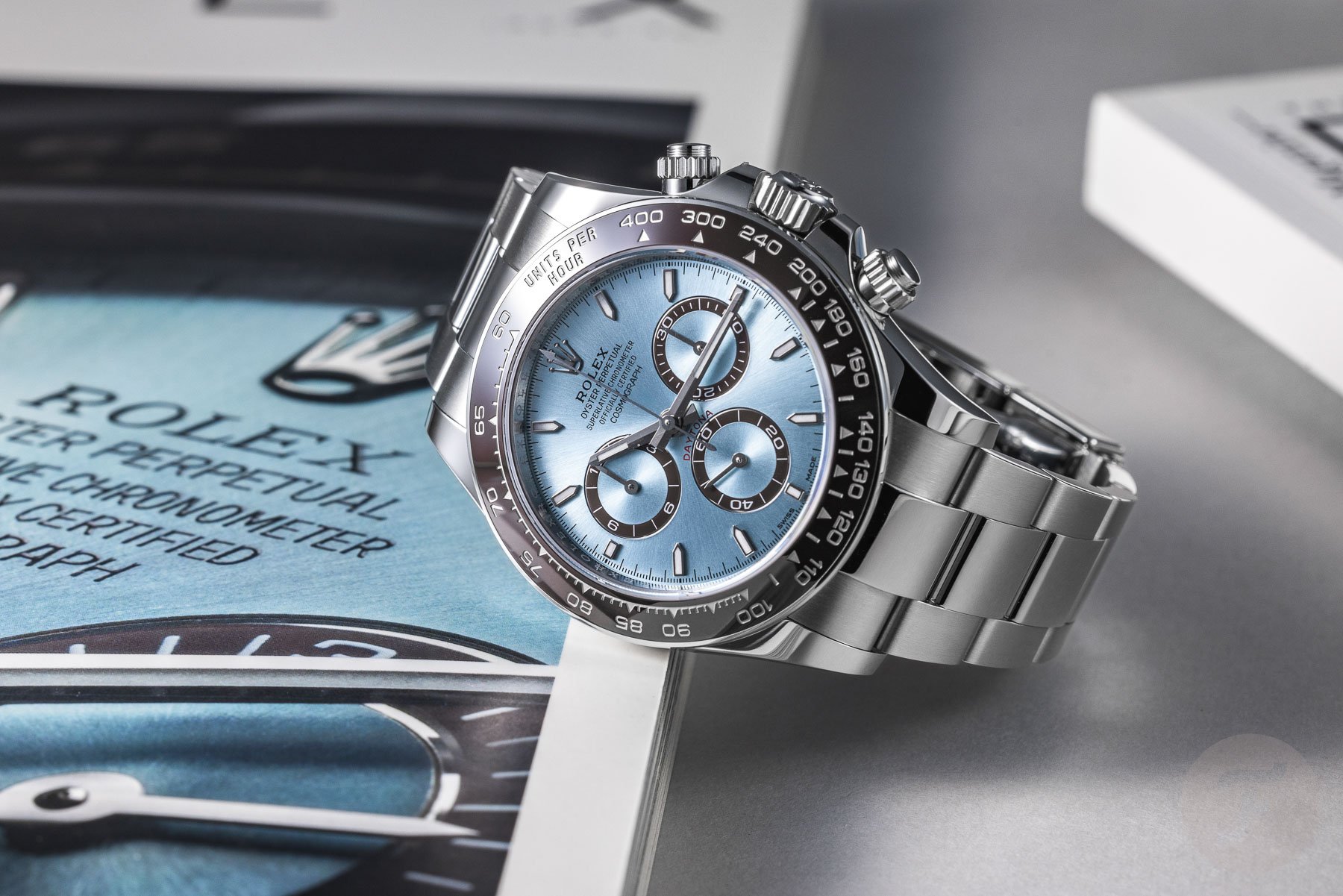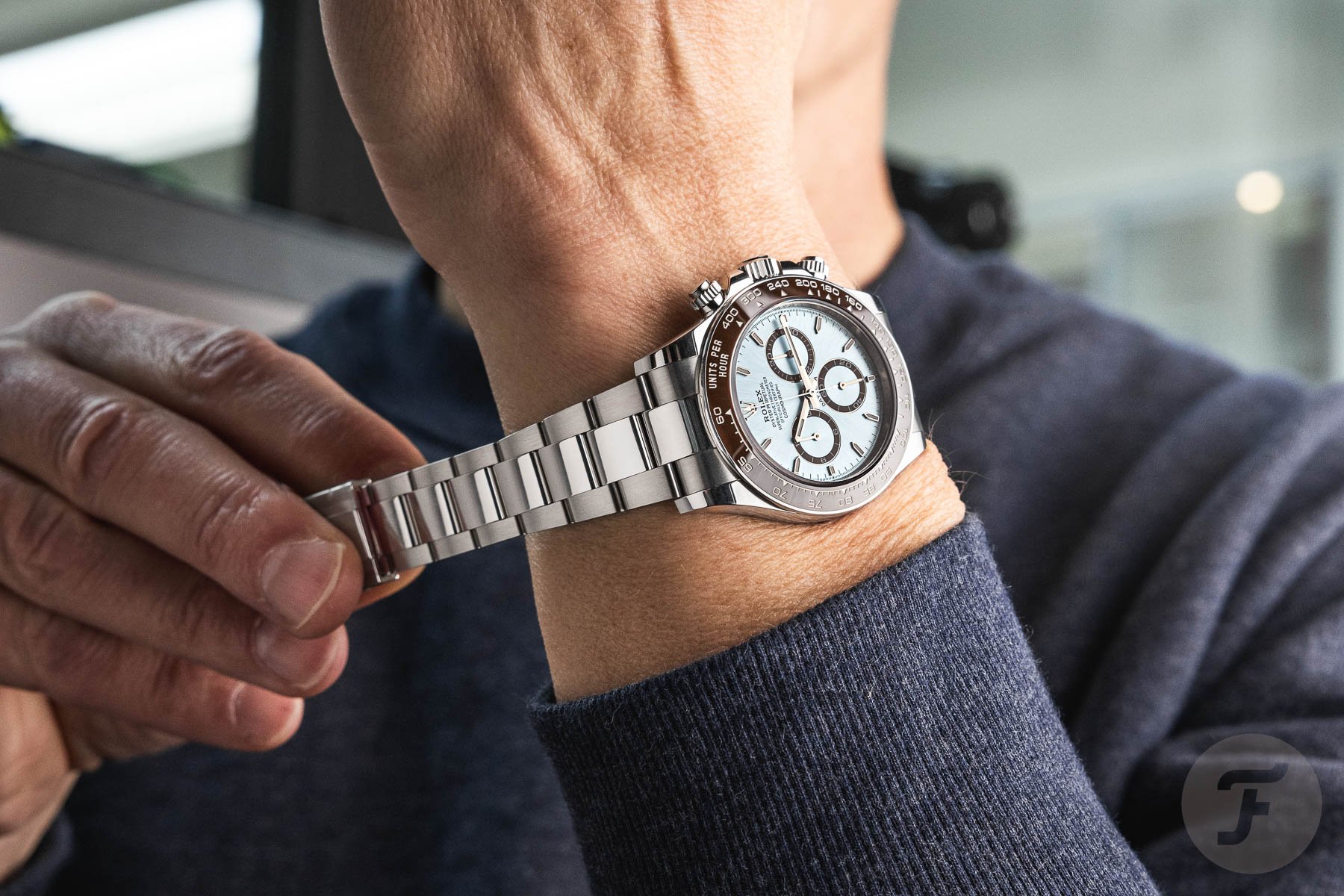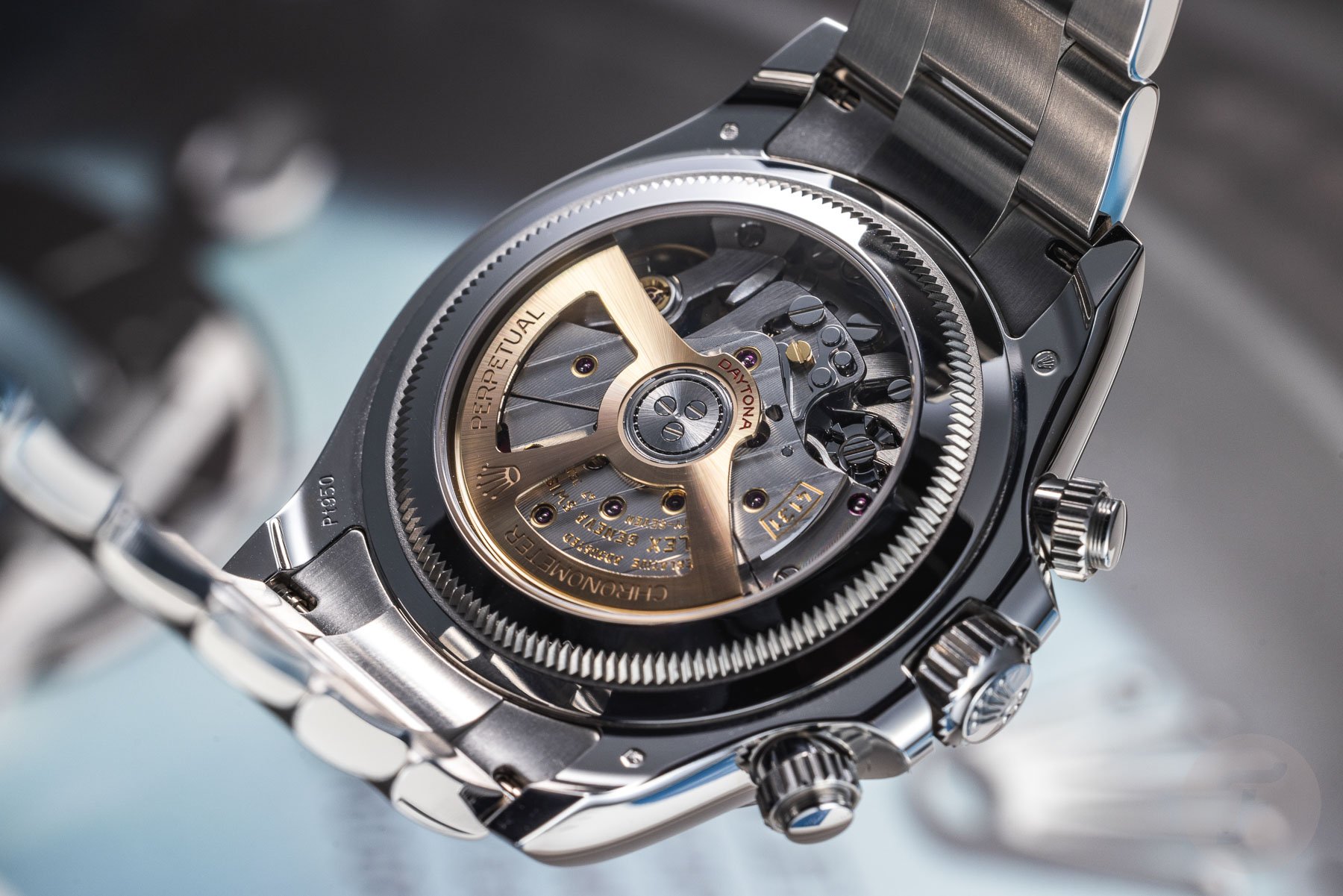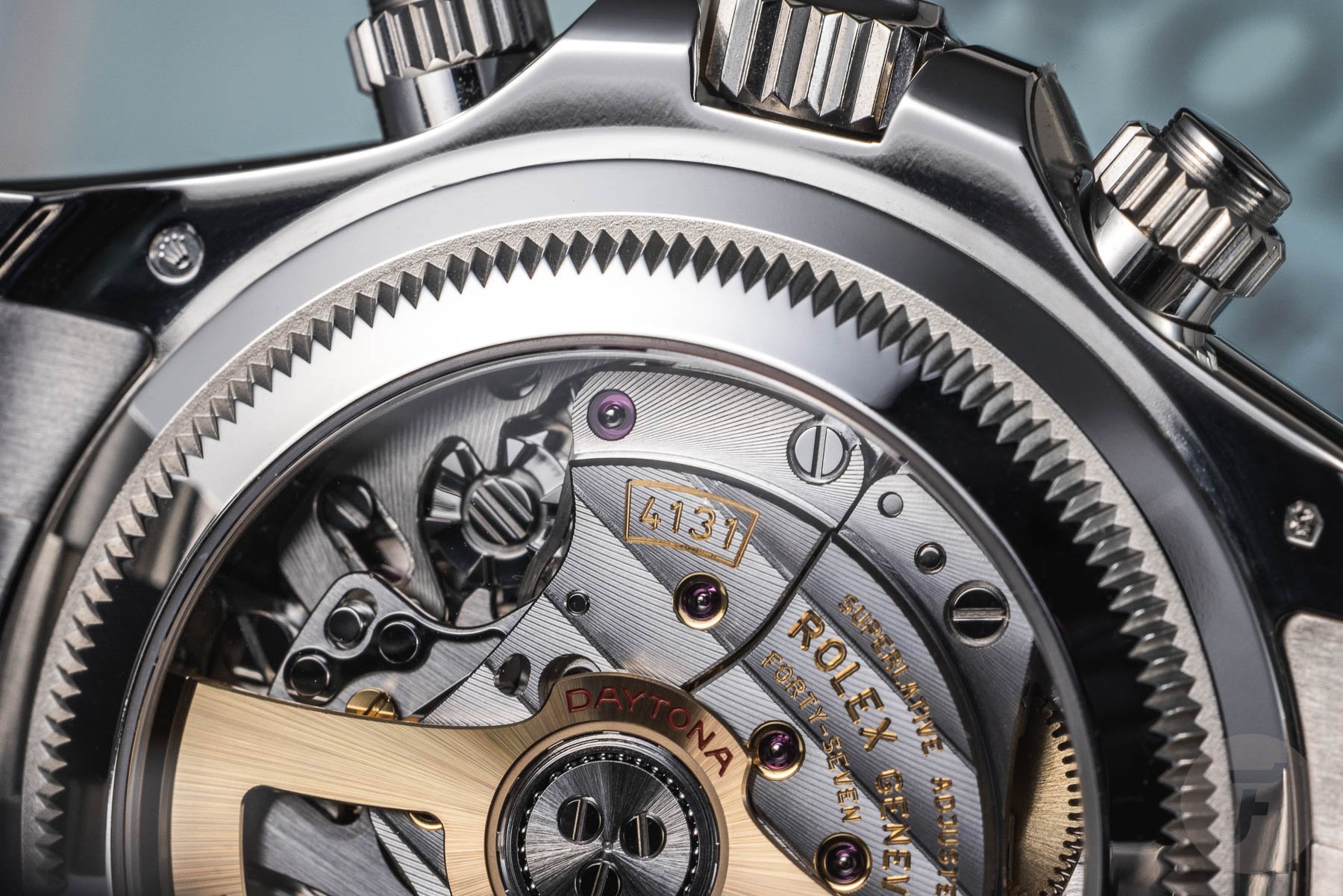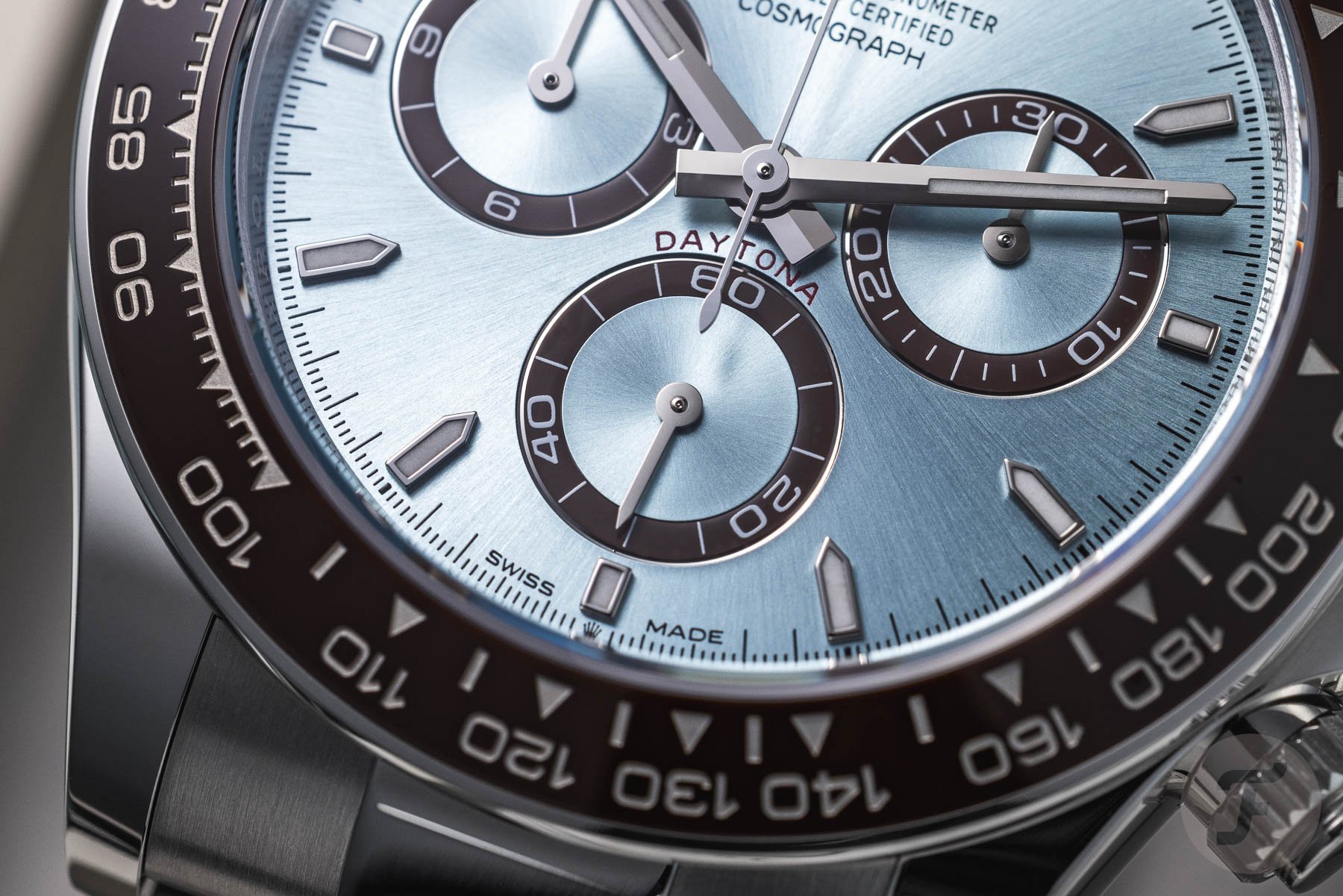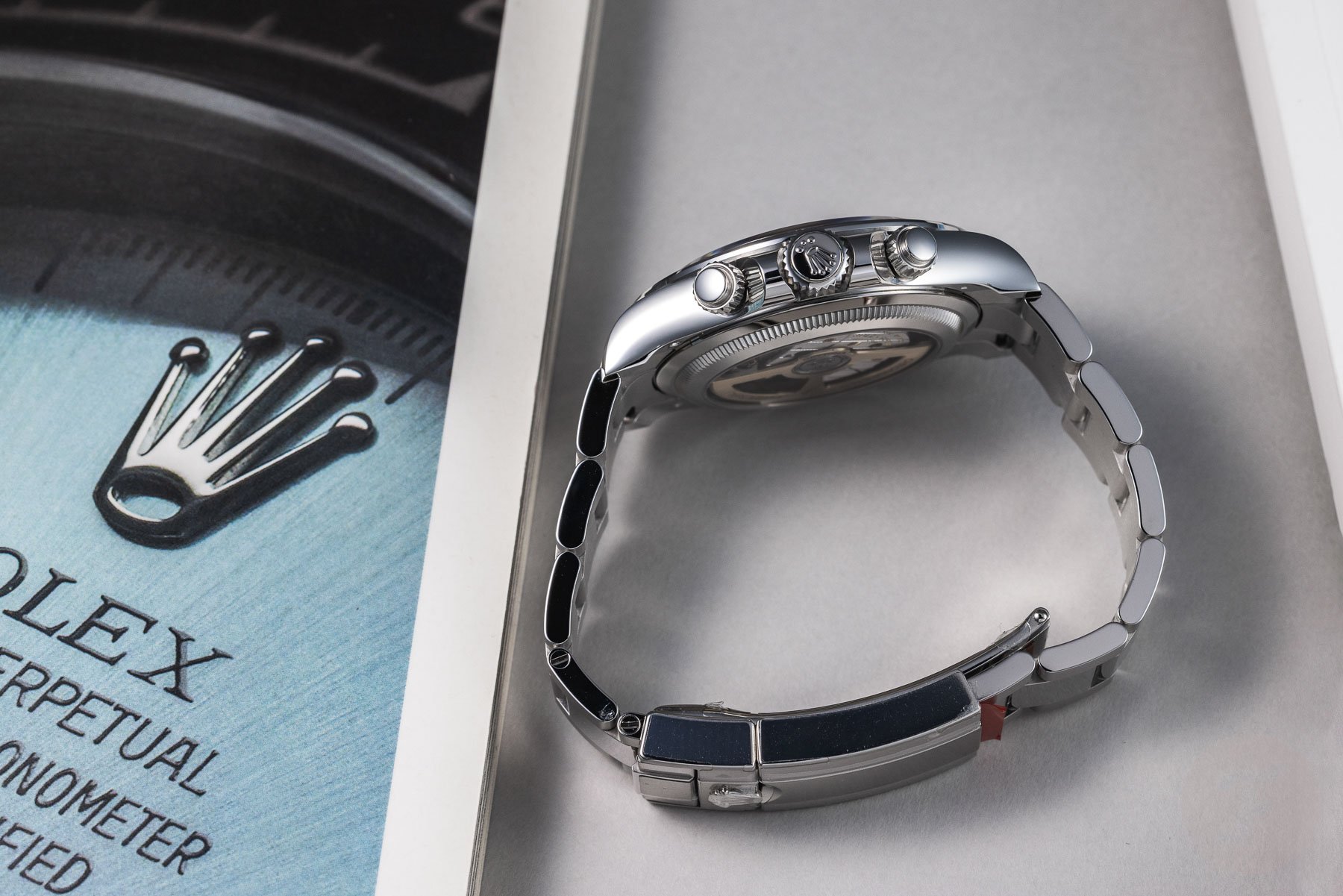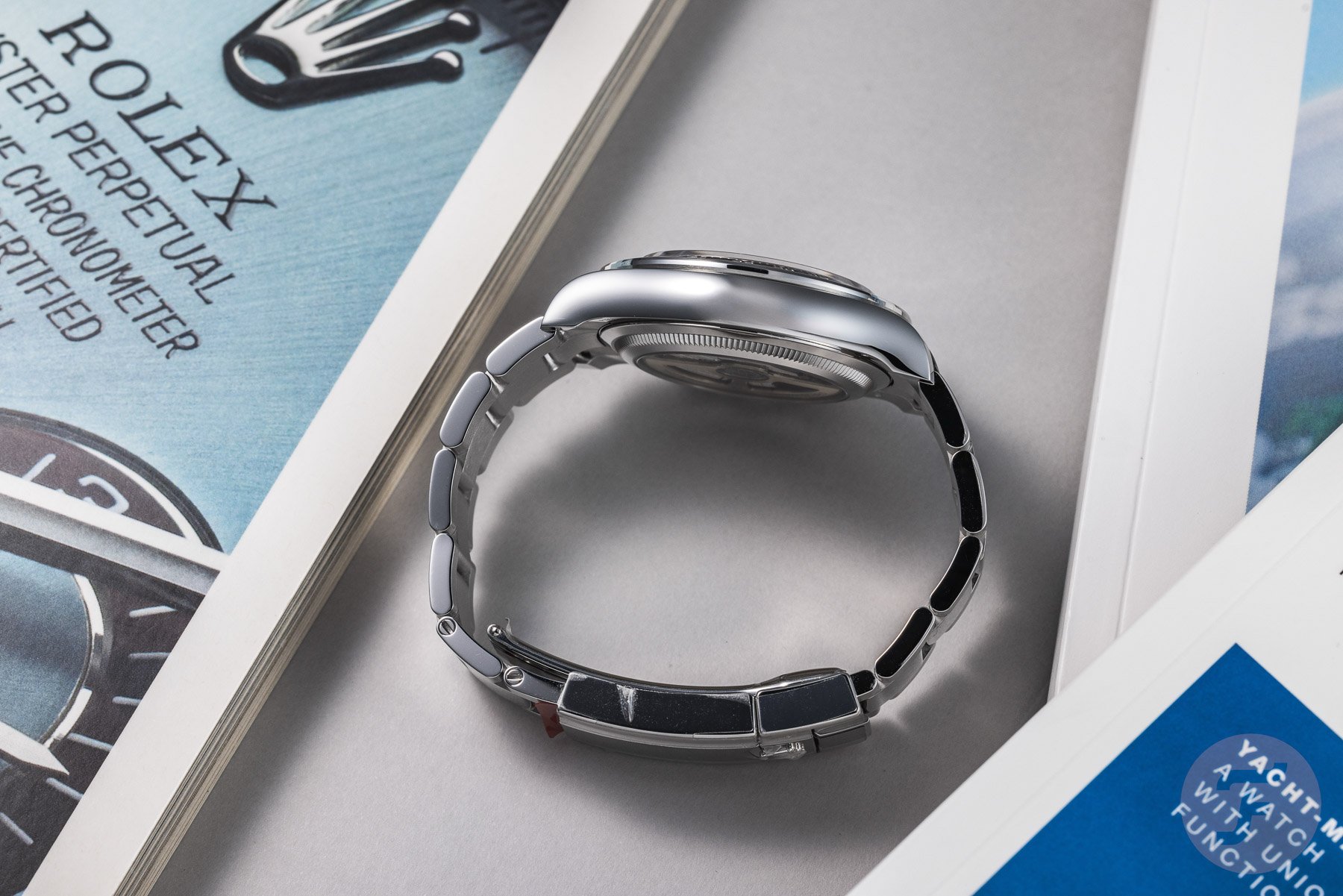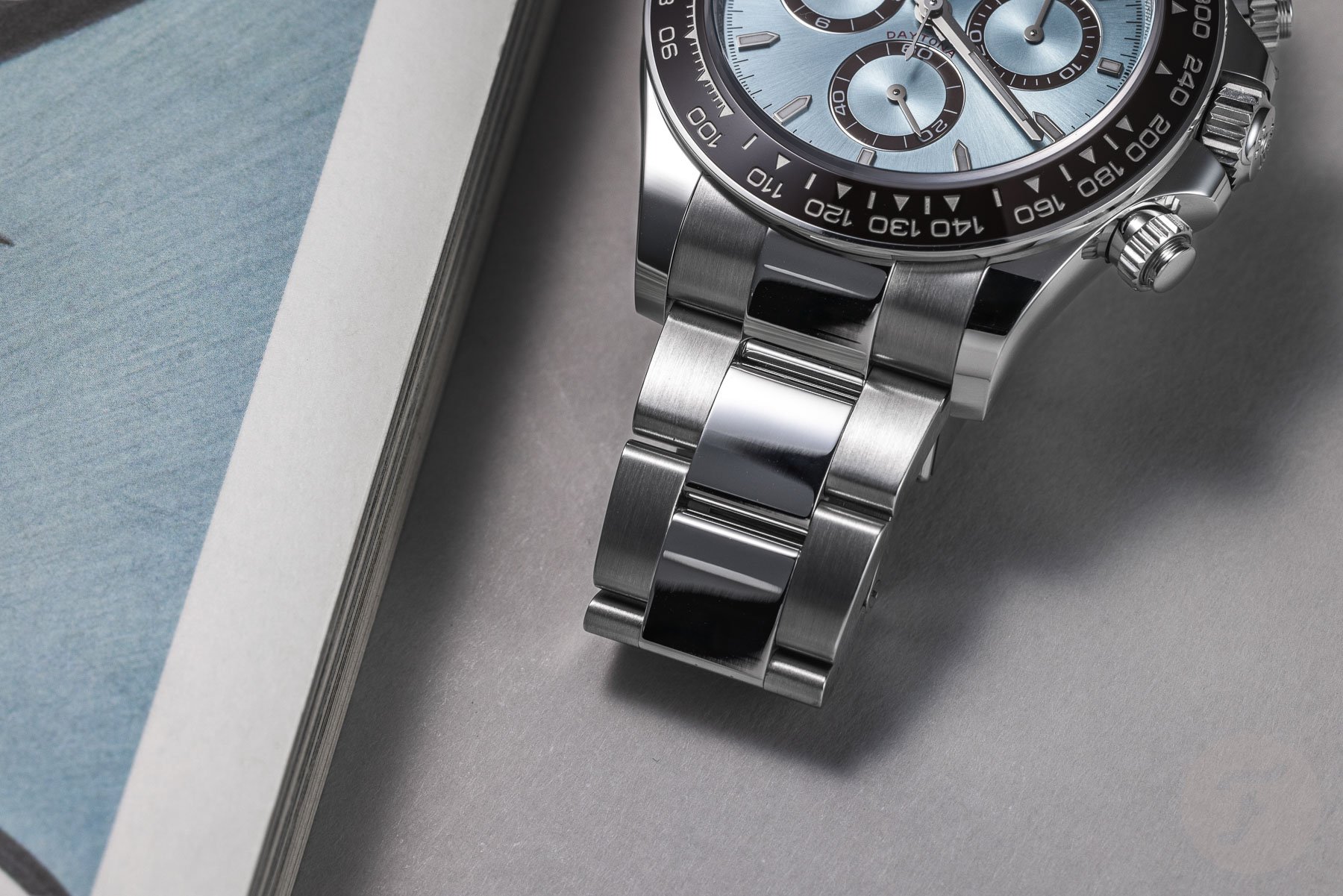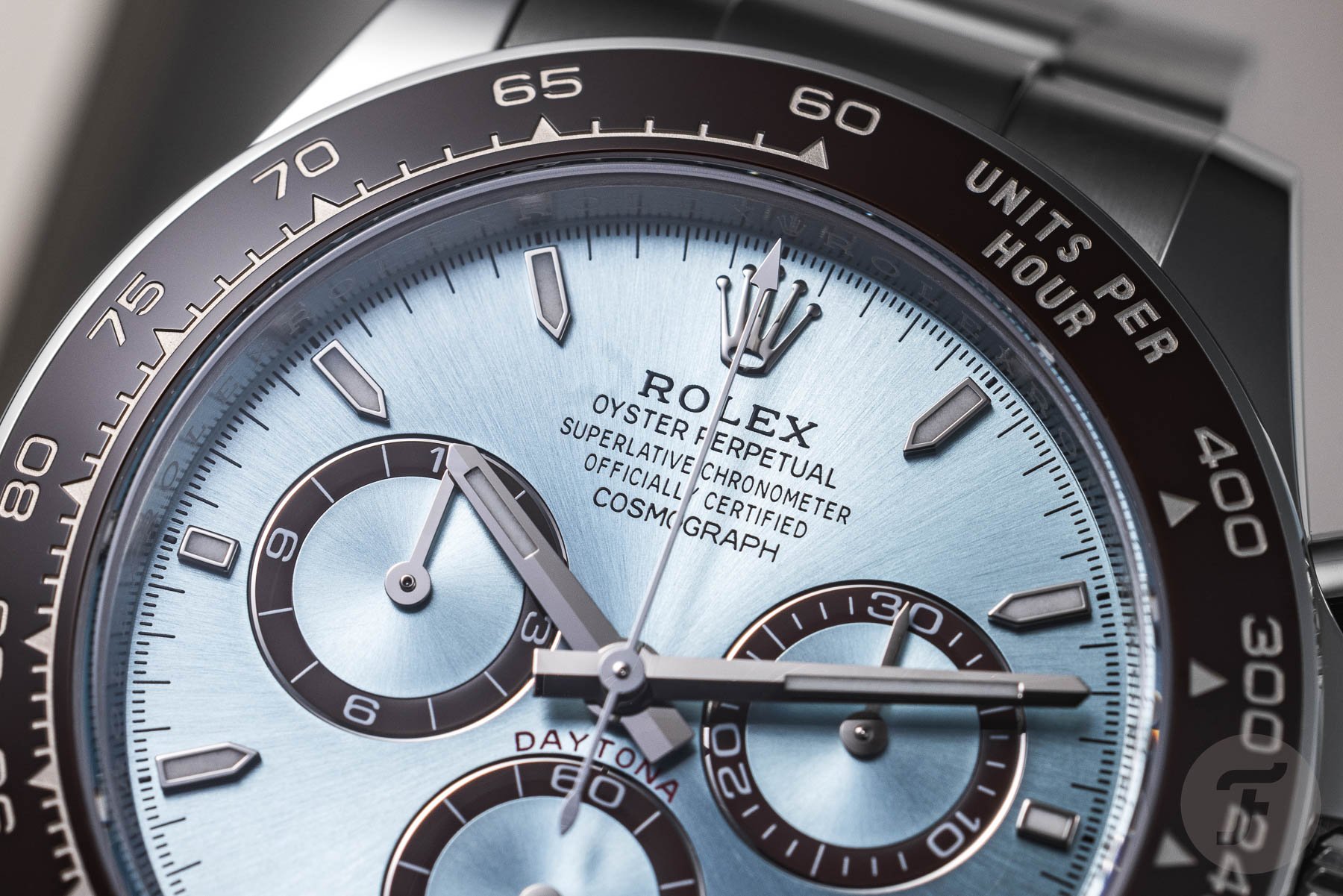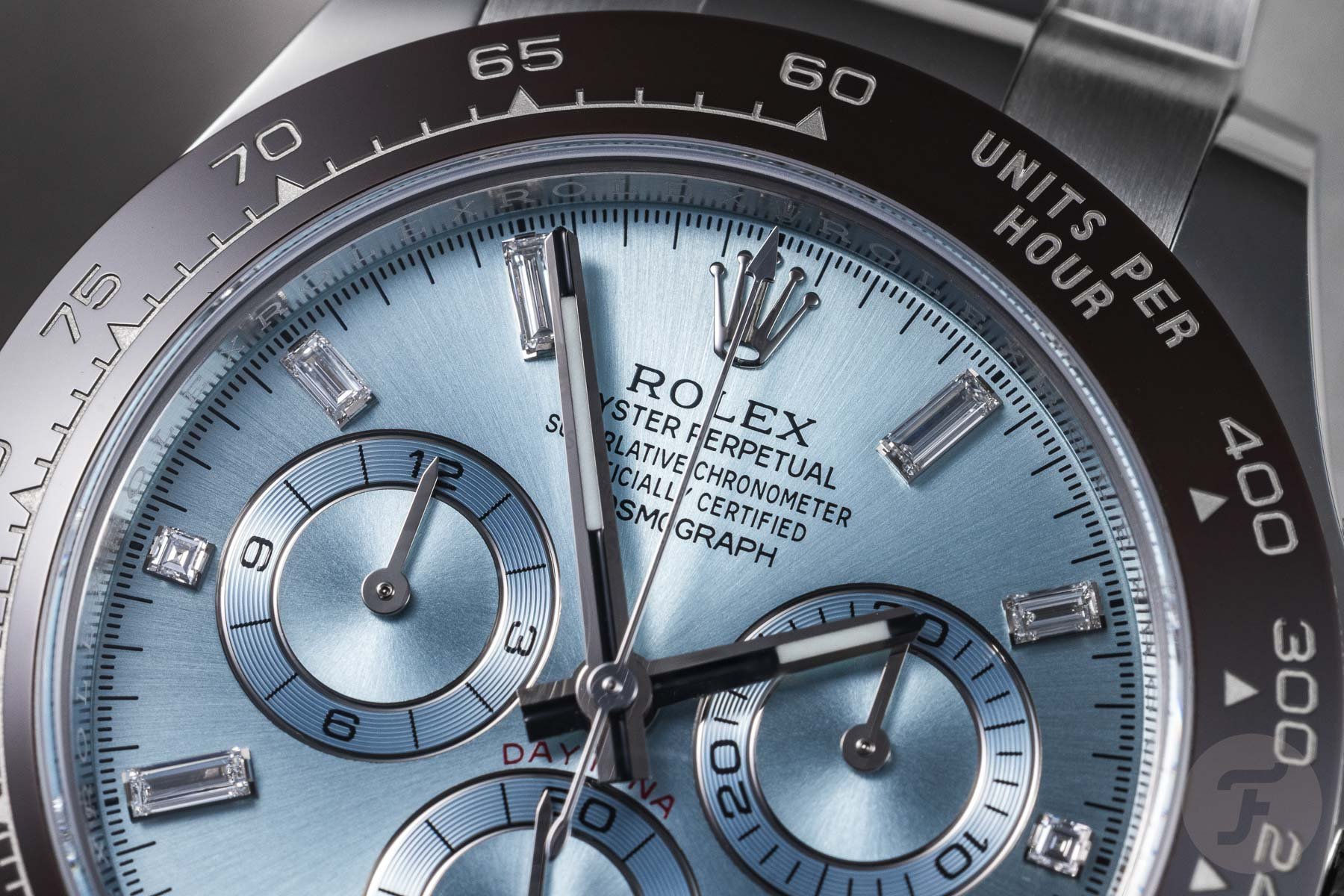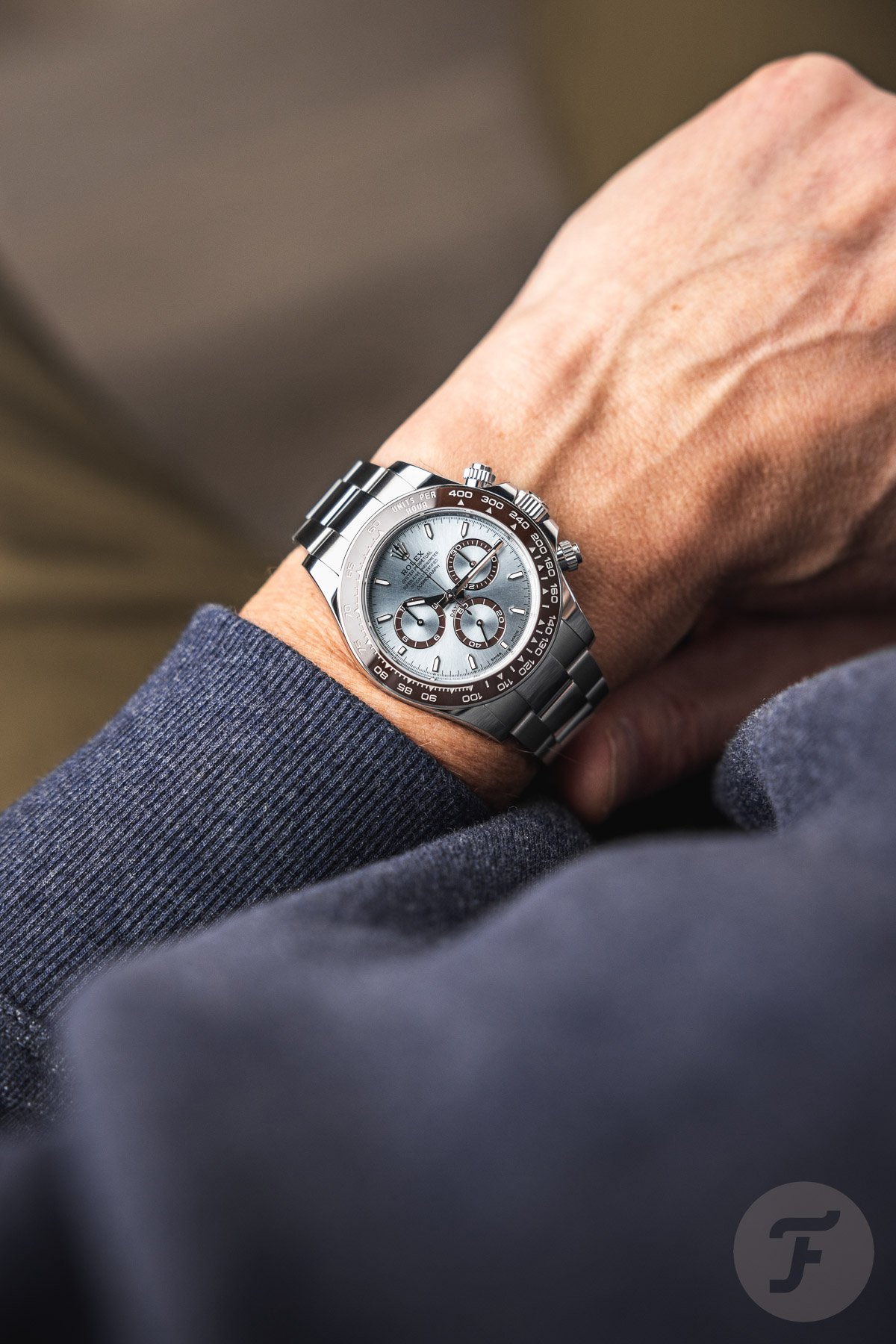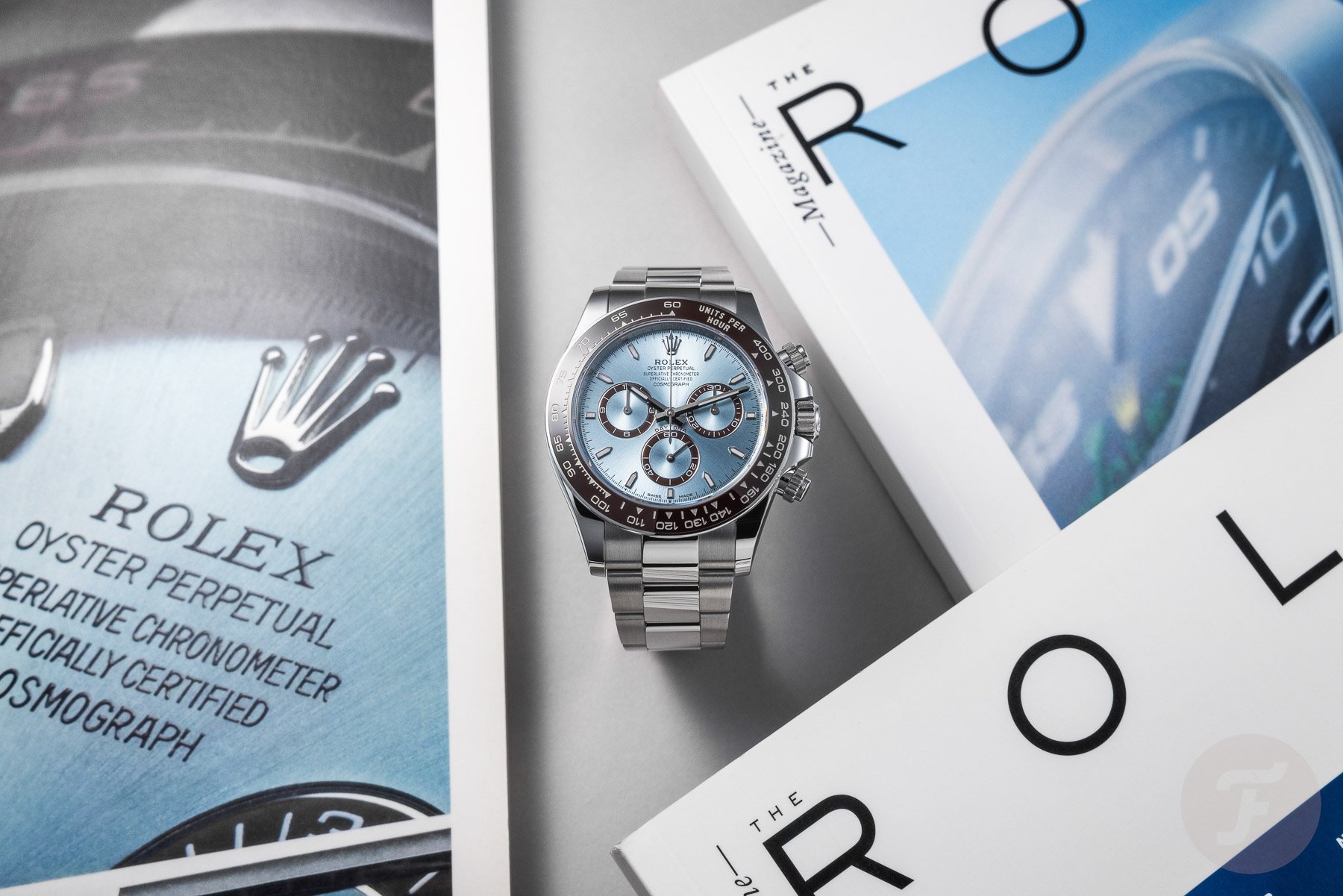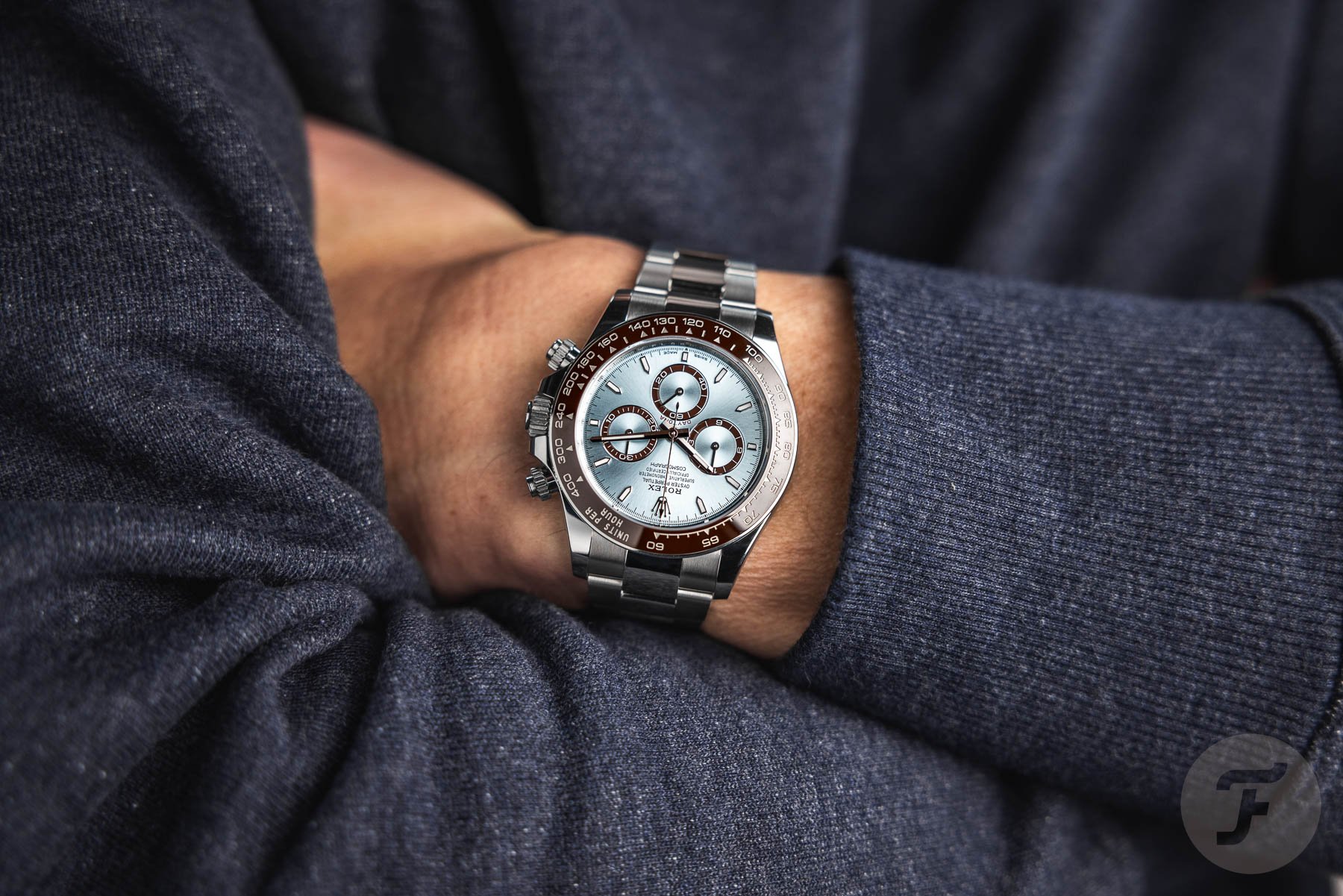Hands-On With Two Of The Most Desired Watches In The World: The Old And The New Rolex Daytona In Platinum
Yes, this is a hands-on with the new Rolex Daytona in platinum, the ref. 126506. But guess what? There also was an “old” platinum Daytona ref. 116506 with an ice-blue, diamond-set dial at hand for some live comparisons. Two platinum Daytonas at HQ at once — is that too much of a good thing? Nope, absolutely not.
It wasn’t a big celebration, and yet it was. Last year, Rolex (kind of) celebrated the 60th anniversary of its Cosmograph Daytona. The brand did so by updating the collection that celebrated the Daytona’s 50th anniversary 10 years ago. What was the biggest change? Well, it must have been the fact that the range-topping model, the platinum ref. 126506, is the first Rolex sports watch with a display case back. But since you wear the watch on the wrist, it’s actually the smaller updates that make a difference. Let’s take a closer look while going hands-on with one — no, two — of the world’s most desired watches.
Experiencing the Rolex Daytona in platinum times two
I once wrote an article with the title “The Rolex Daytona Is No Longer A Watch.” In the story, among other things, I wrote the following:
“Because of waiting lists with no hope on the horizon and the steady rise into the stratosphere of prices on the parallel market, the iconic Cosmograph has become a symbol of many things — and many things that are not too positive, unfortunately. The Daytona is, in essence, a sporty chronograph of course, but in reality, it now functions as currency or a commodity. Where has the watch-fun element gone, and will it ever come back?”
Well, I stand by my words, but I will comment on the fun factor. Having the chance to try on and try out not one but two platinum Daytona chronographs was heaps of fun. I mean, seeing two of these rare, desired, coveted, and expensive watches while being able to examine them in peace and quiet is something you don’t get to experience every day. Starstruck much? Yes, maybe a little. It starts with picking up both watches at the same time. When you do so, you’re holding close to 600 grams of luxury watch. The old ref. 116506 with its solid case back weighs in at 284 grams. Since the new ref. 126506 has a sapphire case back, it’s slightly less heavy. That’s partly because the density of sapphire glass is 3.98 grams per cubic centimeter, while that of platinum is 21.45 grams per cubic centimeter.
Take a look inside the Daytona
You could argue that the use of sapphire over just platinum for the case back is a way of saving money. For the manufacturer of the watch, that is, not for the buyer. When it came out 10 years ago, the launch price of the ref. 116506 with its all-platinum case back was US$75,000. The 2023 ref. 126506 has a list price of US$77,800. That’s not a steep price increase, but maybe that’s because of the sapphire case back. And what it reveals is the new caliber 4131. Interestingly, this updated version of Rolex’s caliber 4130 has fewer components than its predecessor. Rolex managed to reduce the number of parts for the chronograph mechanism. As a result, it should be (even) more reliable and easier to service.
The automatic caliber 4131 also got an upgrade in the shape of Rolex’s patented Chronergy escapement, Paraflex shock absorbers, and optimized ball bearings for the rotor to spin on. Speaking of that rotor, in the platinum Daytona, the bidirectionally winding oscillating weight comes in 18K yellow gold with two cutouts The movement still beats at the same 4Hz frequency and also still has a 72-hour power reserve as before. And don’t you worry; caliber 4131 is, of course, a Superlative Chronometer, meaning it’s a COSC-certified chronometer that also passed the brand’s in-house testing to ±2 seconds per day.
Rolex made an effort to create a good-looking movement by adorning the bridges with Rolex Côtes de Genève decoration. This striped pattern may look like traditional Côtes de Genève at first glance, but it features a slightly polished groove between each stripe. It takes a magnifying glass to fully appreciate this type of decoration, but it does look refined and luxurious. It’s in line with the (price) level of the watch.
Evolution at its best
In 2013, when Rolex introduced the Daytona ref. 116506, which paired a light blue dial with a brown ceramic bezel, it might have been revolutionary. It was quite a polarizing watch. But since the watch in question was a platinum Rolex Daytona, it soon transcended the discussion and became an object above any debate. The new ref. 126506 is not revolutionary but, rather, evolutionary. The good thing about evolution is that, when it’s for the better, it is so easy to appreciate. The touch-ups to the platinum Daytona work very well. First, there’s the slimmed-down and refined case.
The case of the 2023 model is slightly more tapered and also less rounded. The 100m-water-resistant case is paired with a screw-down crown and the characteristic screwed pushers that some love and some just don’t. The 40mm diameter of the case remains the same, but the watch has become slightly thinner and longer. The 60th-anniversary Daytona has a relatively thin 11.9mm profile and 47.7mm lug-to-lug length; that’s 0.5mm thinner and 0.2mm longer than its 50th-anniversary predecessor.
It still has a 20mm lug spacing, but because of the slightly changed lugs, the bracelet blends in better and more smoothly than before. The three-row Oyster bracelet in platinum closes with an Oysterlock clasp that features the 5mm Easylink comfort extension.
Evolution at its best — part 2
“Refinement” is the word that describes the other visual updates best. The new Cerachrom bezel in chestnut brown shows a platinum band around it, which gives it a more defined and contrasted look. The bezel also looks a bit sharper and more precise because its molded numerals and graduations in platinum PVD are a tiny bit closer to the dial.
The dial shows slimmed-down rings around the sub-dials, and there’s also more contrast between them and the dial. The 18K gold applied hour markers are also now slimmer than before, but don’t look at Morgan’s pictures to compare them. That’s because the ref. 116506 that we had at Fratello HQ has baguette-cut diamond indexes. There’s also another little difference on the dial front that is interesting to mention.
Diamonds, yes or no?
Did you take a closer look at the two different dials? Did you pick a favorite? I did. And it’s not in the pictures because Rolex doesn’t make the dial that I would prefer to see. The dial of the old ref. 116506 with diamond indexes doesn’t have brown rings around the sub-dials, but the dial of the new ref. 126506 does. In the old Daytona, the model with regular indexes also had brown rings, but the 2023 Daytona has brown rings around the sub-dials whether the dial has regular indexes or diamond ones. Don’t you think the full ice-blue dial looks sharper, cleaner, and more refined?
Pushing the platinum powerhouse around
Handling and wearing a platinum Daytona is an overwhelming experience. Not only is it the weight that impresses you, but no matter how prepared you think you are, it’s also the build quality. It’s like that of a steel sports Rolex but 10 times better. The weight, the feel of the bracelet, the solidity of the clasp, the action of the pushers that operate the column-wheel, vertical-clutch chronograph, and the watch’s uniquely warm and cold look all make putting the platinum Daytona on the wrist and seeing it there a very special experience.
It’s possibly a once-in-a-lifetime experience, even, because there are not that many platinum Daytonas around. The new one in platinum has only just started to make its appearance on the market. The waiting lists at Rolex dealers worldwide are long, and dealers are very picky when allocating the few watches they receive from Switzerland. And it’s also slim pickings on the secondhand/parallel market. There are less than 75 ref. 126506 watches with and without diamond indexes on Chrono24, and they all have an asking price of well over US$100K. The discontinued ref. 116506 is now only available through the secondhand/parallel market. There are more than 300 watches available on Chrono24, and although the prices are significantly lower than those of the 2023 model, you will still be paying around US$25K over list.
How to judge or perceive a platinum Rolex Daytona?
It’s very difficult to judge a platinum Daytona just by its qualities as a watch. Knowing about the prices on the parallel market clouds your perception. Based on the watch’s history, the technology and materials used, and the quality of the product, US$77,800 for a platinum chronograph is steep but not unfair. So if you’re lucky enough to get the call from your AD, it is well worth it. The idea that people either have the cash to pay more than US$25K over retail for something just to show off or see and treat it as a commodity taints the perception of the watch.
Unfortunately, wearing a platinum Daytona in the real world can be hazardous, too. And there are other factors that overshadow the luster of a platinum and ice-blue Daytona. It’s a very authoritarian timepiece, for instance; its presence will have you speechless. And that’s a good thing because this watch is beyond debate.
The platinum Daytona is larger than life, a giant of a watch that’s simply too big for the real world. But in the little watch bubble that is Fratello HQ, the Rolex Cosmograph Daytona in platinum reigns supreme; there’s nothing else like it. If only Rolex made the new version with an all-ice-blue dial. Man, even in my little watch bubble, I can’t seem to catch a break.
For more information on the Rolex Cosmograph Daytona ref. 126506, please visit the brand’s official website.

